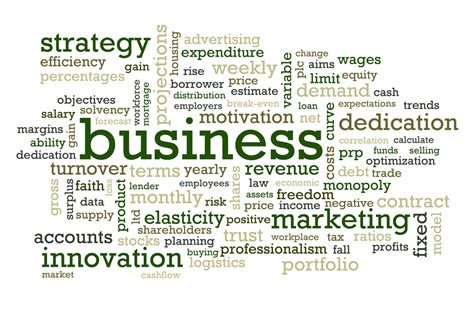Business Jargon: 45 Terms And Phrases Explained In English

Business jargon can often feel like a foreign language, filled with confusing terms and phrases that can leave you scratching your head. Whether you’re new to the business world or just trying to keep up with the latest trends, understanding these terms is crucial for effective communication and success in the workplace. In this article, we’ll break down 45 common business jargon terms and phrases, explaining their meanings in plain English.
1. ROI (Return on Investment)
ROI is a key metric used to measure the profitability or success of an investment. It calculates the return or profit generated relative to the initial investment. For example, if you invest $1,000 in a marketing campaign and generate $2,000 in sales, your ROI would be 100%.
Example:
John invested $10,000 in stocks and earned $12,000 in returns. His ROI was 20%.
2. KPI (Key Performance Indicator)
KPIs are measurable values that indicate the performance and progress towards achieving specific business objectives. They help organizations track and evaluate their success in reaching targets. Examples of KPIs include revenue growth, customer satisfaction, and employee productivity.
Example:
A retail company sets a KPI of increasing sales by 10% in the next quarter. They can track this by monitoring their monthly sales figures and comparing them to the target.
3. SWOT Analysis (Strengths, Weaknesses, Opportunities, Threats)
A SWOT analysis is a strategic planning tool used to assess a company’s internal strengths and weaknesses, as well as external opportunities and threats. It helps businesses identify areas of improvement and develop strategies to capitalize on opportunities and mitigate potential risks.
Example:
A marketing team conducts a SWOT analysis to evaluate their campaign. They identify their strengths, such as a strong social media presence, weaknesses like limited budget, opportunities in a growing market, and threats from competitors.
4. B2B (Business-to-Business)
B2B refers to business transactions and relationships between two or more companies, rather than between a company and an individual consumer. It involves the exchange of goods, services, or information between businesses.
Example:
XYZ Corporation provides consulting services to ABC Inc., a manufacturing company. This is a B2B relationship.
5. CTA (Call-to-Action)
A call-to-action is a prompt or instruction that encourages the audience to take a specific action, such as making a purchase, signing up for a newsletter, or downloading a whitepaper. It is often used in marketing and advertising to drive conversions.
Example:
A website includes a CTA button that says “Sign up for our newsletter” to encourage visitors to subscribe to their email list.
6. ROI (Return on Investment)
ROI is a key metric used to measure the profitability or success of an investment. It calculates the return or profit generated relative to the initial investment. For example, if you invest $1,000 in a marketing campaign and generate $2,000 in sales, your ROI would be 100%.
Example:
John invested $10,000 in stocks and earned $12,000 in returns. His ROI was 20%.
7. KPI (Key Performance Indicator)
KPIs are measurable values that indicate the performance and progress towards achieving specific business objectives. They help organizations track and evaluate their success in reaching targets. Examples of KPIs include revenue growth, customer satisfaction, and employee productivity.
Example:
A retail company sets a KPI of increasing sales by 10% in the next quarter. They can track this by monitoring their monthly sales figures and comparing them to the target.
8. SWOT Analysis (Strengths, Weaknesses, Opportunities, Threats)
A SWOT analysis is a strategic planning tool used to assess a company’s internal strengths and weaknesses, as well as external opportunities and threats. It helps businesses identify areas of improvement and develop strategies to capitalize on opportunities and mitigate potential risks.
Example:
A marketing team conducts a SWOT analysis to evaluate their campaign. They identify their strengths, such as a strong social media presence, weaknesses like limited budget, opportunities in a growing market, and threats from competitors.
9. B2B (Business-to-Business)
B2B refers to business transactions and relationships between two or more companies, rather than between a company and an individual consumer. It involves the exchange of goods, services, or information between businesses.
Example:
XYZ Corporation provides consulting services to ABC Inc., a manufacturing company. This is a B2B relationship.
10. CTA (Call-to-Action)
A call-to-action is a prompt or instruction that encourages the audience to take a specific action, such as making a purchase, signing up for a newsletter, or downloading a whitepaper. It is often used in marketing and advertising to drive conversions.
Example:
A website includes a CTA button that says “Sign up for our newsletter” to encourage visitors to subscribe to their email list.
Conclusion
Understanding business jargon is essential for effective communication and success in the workplace. By familiarizing yourself with these 45 terms and phrases, you’ll be better equipped to navigate the business world and communicate with colleagues and clients. Remember to use them appropriately and in the right context to avoid confusion.
FAQs
Q: Why is it important to understand business jargon?
A: Understanding business jargon allows you to effectively communicate with colleagues and clients in the workplace. It helps you navigate conversations, understand industry-specific terms, and stay up-to-date with the latest trends and developments.
Q: How can I learn more business jargon?
A: To learn more business jargon, consider reading industry-specific publications, attending networking events, and engaging in professional development opportunities. You can also seek guidance from mentors or colleagues who are knowledgeable in the field.
Q: Are there any resources available to help me understand business jargon?
A: Yes, there are several resources available to help you understand business jargon. Online dictionaries, industry-specific glossaries, and business communication courses can provide valuable insights and explanations for common terms and phrases.
